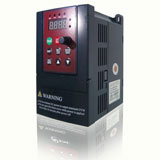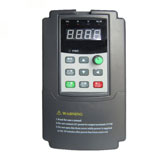Frequency converter typical shortcomings
Improvements are long overdue on the input side of the frequency converter: active input stages on frequency converters could impart the ability to perform power factor correction and solid-state soft starts. Benefits would include power cost savings, further reductions in package size, and increased reliability and safety.
Other power input enhancements could include line reactors, EMI filters, and semiconductor fuses. While these devices might increase the price of the frequency converter itself, they are required for many applications. Specifying, mounting, and wiring these additional components into a frequency converter system is certainly not as productive as buying a frequency converter with those parts designed-in. While such built-in extras might lead to increased productivity for the users, the price pressure on manufacturers discourages them from including these advanced features.
Ease-of-use issues are still prevalent with many frequency converters. Defaults for all parameters should allow the frequency converter to operate "out-of-the-box" with a minimum of programming. Some manufacturers force the user to enter dozens, if not hundreds, of parameters to spin the motor. Entering nameplate data for a few key settings is all that should be required to bring a frequency converter system online quickly and productively.
English-language error messages are much more useful than cryptic error codes. Instead of looking up a code (or looking for the manual) users can begin problem diagnosis immediately. Imagine a frequency converter that e-mails an alert about increased frictional load, allowing the replacement of a faulty bearing during scheduled downtime, as opposed to an unexpected bearing failure during a critical runtime period. Frequency converters with self-diagnostic and predictive-maintenance capabilities offer additional productivity gains.
Frequency converters can also impair productivity when a program is not sophisticated enough to meet application requirements. For example, in a web application, the frequency converter's PID parameters must be tuned to the optimum level in order to achieve maximum output without affecting the end product reliability. If the frequency converter designer does not incorporate into the software a simple way to tune these parameters, an optimum result will not be obtained. This can cause a direct reduction in productivity.
Some frequency converters are designed and built without certain electrical and mechanical features needed to survive harsh industrial environments, affecting productivity in a negative way. These include:
Typical shortcomings of frequency converters are that they cause noise in the motor power cables and only offer limited speed accuracy. As update times within the frequency converter get faster speed accuracy is limited.
Other power input enhancements could include line reactors, EMI filters, and semiconductor fuses. While these devices might increase the price of the frequency converter itself, they are required for many applications. Specifying, mounting, and wiring these additional components into a frequency converter system is certainly not as productive as buying a frequency converter with those parts designed-in. While such built-in extras might lead to increased productivity for the users, the price pressure on manufacturers discourages them from including these advanced features.
Ease-of-use issues are still prevalent with many frequency converters. Defaults for all parameters should allow the frequency converter to operate "out-of-the-box" with a minimum of programming. Some manufacturers force the user to enter dozens, if not hundreds, of parameters to spin the motor. Entering nameplate data for a few key settings is all that should be required to bring a frequency converter system online quickly and productively.
English-language error messages are much more useful than cryptic error codes. Instead of looking up a code (or looking for the manual) users can begin problem diagnosis immediately. Imagine a frequency converter that e-mails an alert about increased frictional load, allowing the replacement of a faulty bearing during scheduled downtime, as opposed to an unexpected bearing failure during a critical runtime period. Frequency converters with self-diagnostic and predictive-maintenance capabilities offer additional productivity gains.
Frequency converters can also impair productivity when a program is not sophisticated enough to meet application requirements. For example, in a web application, the frequency converter's PID parameters must be tuned to the optimum level in order to achieve maximum output without affecting the end product reliability. If the frequency converter designer does not incorporate into the software a simple way to tune these parameters, an optimum result will not be obtained. This can cause a direct reduction in productivity.
Some frequency converters are designed and built without certain electrical and mechanical features needed to survive harsh industrial environments, affecting productivity in a negative way. These include:
- Enclosure design - An enclosure with NEMA-4 rating can protect against dust, sprayed liquids, and other contaminants present in a typical industrial environment, where a less expensive NEMA-1 design allows these substances to contact the inner workings of the frequency converter, causing the potential for premature failure or overheating.
- Non-isolated user inputs - The lack of input signal isolation makes frequency converters more prone to "noise" which can cause nuisance tripping, or catastrophic failure if the input signal wiring is inadvertently grounded.
- Lack of line conditioning components - frequency converter designs that omit EMI/RFI suppression and line conditioning components are more likely to fail due to power line problems, and can also cause problems with other electronic equipment by polluting the connected power line with electrical noise. Frequency converters lacking these features have an initially low purchase price, but adding external filters or chokes often causes installation price to exceed that of a frequency converter incorporating these features.
Typical shortcomings of frequency converters are that they cause noise in the motor power cables and only offer limited speed accuracy. As update times within the frequency converter get faster speed accuracy is limited.

 High quality frequency inverters for electric motor speed controls in energy-saving solutions.
High quality frequency inverters for electric motor speed controls in energy-saving solutions.

